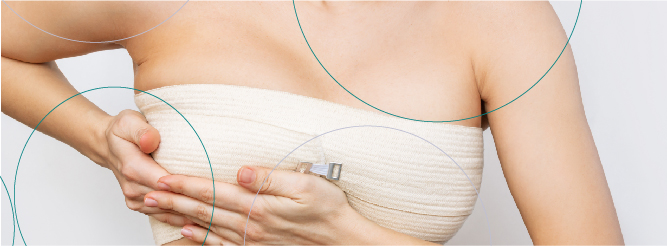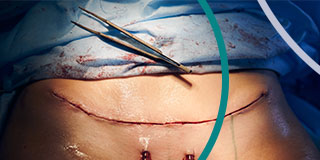
There are many reasons why people decide to undergo a certain type of surgery; it could be out of necessity to address a medical problem; others decide to get reconstructive surgery to correct birth defects or any other physical aspect that was altered due to trauma, while some turn to cosmetic surgery to enhance their appearance and give a boost to their self-esteem. Whichever the reason may be, having surgery is no small feat, and there are several steps before and after that one must follow to ensure that the procedure is a success.
One of the most common surgeries around the world is breast augmentation or augmentation mammoplasty with it representing 17.6% of all plastic surgical procedures[1]
This type of surgery can be both cosmetic and reconstructive, and some of the main reasons why people turn to it are the following:
- To enhance their physical appearance.
- To reconstruct their breasts after a mastectomy.
- To modify or increase the size of their breasts due to unevenness or pregnancy.
Before surgery, it’s important that you’re aware of what this procedure entails; from the preoperative process to the recovery process so that you’re mentally and physically ready for what your body is about to go through. At LIMARP®, our team of surgeons, led by Dr. Liza María Pompa González, first examine your medical history to determine if you’re a candidate for this surgery. If so, they will discuss your options and create a treatment plan that suits your needs and expectations.
They will also discuss your recovery treatment and provide a set of instructions, along with a timeline, that you must follow to avoid any postoperative complication and ensure that the surgery in its totality is a success. In this article, we’ll discuss more about breast augmentation, the recovery timeline, what signs of complication to watch out for, and a few recommendations.
For more information about the breast augmentation procedure and the services we provide at our clinic, we invite you to read the following post on our website or to schedule an appointment with one of our doctors.
Breast Augmentation: A Brief Explanation
Breast augmentation is a cosmetic or reconstructive surgery that uses implants to either increase the size or change the shape of healthy breasts. It can also be applied to correct congenital defects of the breasts and the chest wall. Once your doctor confirms you’re a candidate for this surgery, they will go over the procedure so that you’re informed on what’s going to be performed on your body.
The surgery can be completed in about one to two hours and these are the steps that are performed during a breast augmentation procedure [2]:
- Anesthesia. Breast augmentation is typically performed under general anesthesia, regional anesthesia with sedation can also be used according to each patient’s case.
- Incisions. Once the anesthesia kicks in, your surgeon will create an incision. The type and location will depend on the goal of the surgery. However, most incisions are placed in the crease under the breast, the armpit, or around the areola. Your plastic surgeon will strategically place the incisions to minimize scarring, as well as its visibility.
- Implant placement. Once the incisions are made, the breast implants will be placed either above or beneath the pectoral muscle. Our team will discuss your options with you in detail during your initial consultation.
- Stitches. After the implants have been placed, the incisions will be closed with surgical sutures. In most cases, absorbable stitches will be used; if not, your doctor will give you indications on how to take care of them to avoid infection during your recovery and tell you when to come in so they can remove them.
- Bandages. Your plastic surgeon may place surgical drains in your incisions to help reduce swelling and inflammation during your recovery process. You will also be fitted for a compression garment which will help support and contour the healing tissues around your breasts.
Recovery Timeline
It’s important to highlight that since everyone’s body and situation is different, there is no exact timeline for recovery. However, a full recovery can take on average from six to eight weeks.
Once you’re out of surgery, your doctor will examine your overall health and provide an estimated timeline for your recovery. Next, we’ll go over the different stages of the postoperative process and what you can expect.
First of all, we recommend that you have everything ready at home prior to your surgery. This means having a comfortable recovery area where you can relax and be comfortable; this includes having easy access to everything to avoid unnecessary movement, such as food, water, medication, extra pillows, and entertainment.
Immediately after your breast augmentation procedure, you will be groggy and probably sore due to the anesthesia. You’ll be monitored during the first few hours until your surgeon clears you to go home, and because of the lingering anesthesia effects, you’ll need someone to drive you home and to assist you around the house for the remainder of the day. Before you leave, your doctor will wrap your breasts with a bra or elastic band so that they’re supported during your recovery.
Within the first week of your recovery process, you might experience the following:
- Pain and discomfort that will progressively fade.
- Minor bleeding at the incision sites.
- Bruising and swelling around the breasts.
To manage the pain in the first few days after your surgery, your doctor will likely prescribe pain medication or recommend that you manage it with over-the-counter painkillers. Once it subsides, you will gradually return to your daily activities, but be sure to get your surgeon’s approval. Most patients are able to return to work a week into their recovery process and your doctor may even recommend that you take short walks to get your blood flowing and prevent blood clots.
Although light bleeding in the first few days is normal, talk to your doctor about any rising concerns or if the pain becomes unmanageable.
After the first week, the bruising and swelling, as well as the pain should have subsided considerably, but your doctor will suggest you keep your activities light and to avoid strenuous activity, such as heavy lifting and rigorous workouts. You may still experience tightness around your chest, which is perfectly normal because the breast implants are still settling.
You’ll progressively feel better in the following weeks and months after your surgery, but you should still consult your doctor before taking on new or old activities that require a lot of effort. To have a successful recovery, we recommend you be patient with your progress and to follow your doctor’s indications in order to avoid any kind of complications.
Keep in mind that you will have to wear a bra at all times during your postoperative process, which is why we recommend you get a recovery bra, which will also help reduce the pain and swelling you’ll experience throughout the first weeks. These bras are specially designed to maximize post-op comfort, but they also provide implant stability, increased circulation and mild compression to ensure proper lymph drainage; some styles even have bands that help you comfortably accommodate any post-op swelling that occurs [3].
Other recovery tips your doctor will suggest include:
- Incision care. Your doctor may suggest you wear bandages or apply ointments to keep the incisions clean and to prevent infections during your recovery. Follow the instructions your doctor gives you and apply any changes they might suggest during your follow-up consultations.
- Take your medication. Pain medication will help ease the discomfort in the first weeks post-op and if your doctor prescribed antibiotics, be sure to complete the dose that was given to you.
- Wear loose clothing. Aside from the recovery bras, we recommend that you wear breathable clothes so that you’re comfortable throughout your recovery. Avoid any tight clothing that might increase the pain around your chest or that limits your movement.
- Follow a healthy diet. Part of your postoperative process includes adding a healthy nutritional plan that will help your body recover. This plan may vary according to your diet preferences, but lean protein, fruits, and vegetables are highly recommended.
These are just some tips that you can follow to ensure a safe and speedy recovery, but keep in mind that each patient’s process is different and that your doctor may have more or different suggestions that depend on your specific case. They may also vary if you suffered from any complications during or after the surgery, and although they’re not that common, you should be aware of the possibilities.
Some of the complications include:
- Scarring that changes the breast shape or around the implant.
- Breast pain and numbness.
- Undesired or poor results, such as asymmetrical breasts or bad implant position.
- Changes in nipple shape or sensation.
- Seroma or implant leakage.
- Breastfeeding problems.
If you experience any of these complications, contact your doctor immediately. Some of them are treatable, but if necessary, you may need surgery to replace or remove the implants. The results from breast augmentation surgery last around 10 years before the implant shells rupture or leak, and you’ll need surgery to replace or remove them.
Contact Us to Learn More
If you’re recovering from breast augmentation surgery and want to know more about the recovery process, schedule an appointment with one of our doctors. We can help determine the right treatment for you. Contact us online anytime or give us a call at (619) 373-0229.
References
[1] Jalalabadi, Faryan MD*; Doval, Andres F. MD†; Neese, Virginia BS‡; Andrews, Elizabeth BS‡; Spiegel, Aldona J. MD† Breast Implant Utilization Trends in USA versus Europe and the Impact of BIA-ALCL Publications, Plastic and Reconstructive Surgery – Global Open: March 2021 – Volume 9 – Issue 3 – p e3449 doi: 10.1097/GOX.0000000000003449
[2] “Transform the Size, Shape and Symmetry of Your Bust with Breast Augmentation”. https://www.limarp.com/en/services/plastic-surgery/breast-augmentation/ (Accessed June 22, 2022).
[3] “Breast augmentation recovery – what you need to know”. https://www.plasticsurgery.org/news/blog/breast-augmentation-recovery-what-you-need-to-know (Accessed June 23, 2022).


